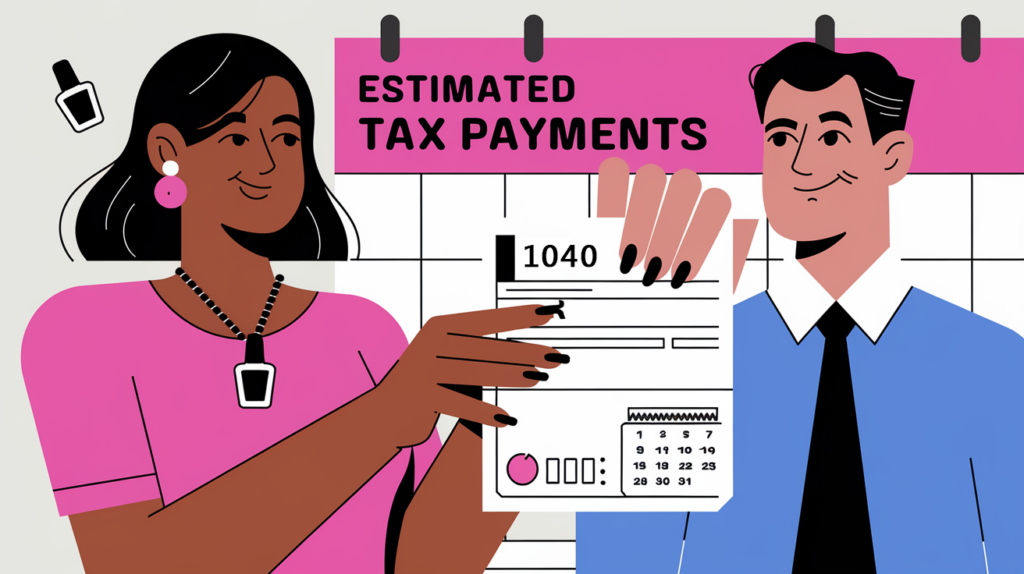Running a successful nail salon is both rewarding and challenging, especially for the many Vietnamese-American entrepreneurs who are the heart of this vibrant industry. While your focus might be on providing excellent services and building relationships with your clients, understanding your tax obligations is crucial for your salon’s long-term success. Let’s walk through some essential tax information to help you manage your business with confidence.
Key Takeaways
- Choose the right business structure: The legal setup of your salon affects your taxes and personal liability.
- Keep detailed records: Staying organized with your income and expenses makes tax time easier and helps your business thrive.
- Know your deductions: Learn what expenses you can deduct to save money on taxes.
- Stay on top of sales and payroll taxes: Understand and comply with state and federal tax requirements.
- Get professional advice: A CPA can provide personalized guidance tailored to your salon.
Choosing the Right Business Structure
Your business structure lays the groundwork for how you operate and how you’re taxed. Here are some common options:
- Sole Proprietorship: This is the simplest form. You and the business are the same entity for tax purposes, which means you report business income and expenses on your personal tax return (Form 1040). Keep in mind, though, you’re personally responsible for any business debts.
- Partnership: If you’re going into business with someone else, a partnership might be suitable. You share profits and losses, and each partner reports their share on their personal tax return. Be aware that partners are jointly liable for business obligations.
- Limited Liability Company (LLC): An LLC gives you personal liability protection, so your personal assets are generally protected from business debts. You also have flexibility in how you’re taxed—you can choose to be taxed as a sole proprietorship, partnership, or corporation. Setting up an LLC involves filing paperwork with your state and following certain regulations.
- S Corporation: This structure can offer tax advantages by allowing you to split income between salary and distributions, which might reduce your self-employment taxes. There are more formalities involved, like filing Form 2553 with the IRS and adhering to stricter operational rules.
Business Structure Comparison
| Structure | Advantages | Disadvantages | Tax Forms |
|---|---|---|---|
| Sole Proprietorship |
|
|
Form 1040 + Schedule C |
| Partnership |
|
|
Form 1065 + K-1s |
| LLC |
|
|
Various (depends on tax election) |
| S Corporation |
|
|
Form 1120S + K-1s |
Detailed Documentation
Keeping your financial records organized isn’t just about making tax time easier—it’s about understanding your business’s health. Consider using an accounting system that tracks:
- Income: Record every sale, whether it’s cash, credit card, or online payments. For cash transactions, keep detailed receipts or invoices.
- Expenses: Log all business expenses like rent, supplies (nail polish, lotions, etc.), utilities, equipment purchases, employee wages, marketing costs, and insurance.
Tip: It’s a good idea to have separate bank accounts for your business and personal finances. This helps keep things clear and can be important if the IRS ever has questions.
Understanding Common Deductions
You can lower your taxable income by deducting business expenses. Common deductions for nail salons include:
- Rent or Mortgage Interest: If you rent or own your salon space.
- Supplies: The cost of items like nail polish, gels, acrylics, and other materials.
- Utilities: Bills for electricity, water, and gas.
- Equipment: The cost of equipment like nail dryers, pedicure chairs, and manicure tables. You might be able to deduct the full cost in the year you buy them using Section 179 expensing, or depreciate them over time.
Example: If you purchased a new pedicure chair for $1,500, you might be able to deduct the entire amount in the year you bought it. - Employee Wages and Benefits: Salaries, wages, bonuses, and benefits you provide to your staff.
- Insurance Premiums: Costs for business insurance policies.
- Advertising and Marketing: Expenses for promoting your salon.
- Vehicle Expenses: If you use a vehicle for business purposes, like picking up supplies, you can deduct related expenses. You can choose between the standard mileage rate or actual expenses.
Remember, there are specific rules about deducting meals and entertainment expenses, so keep detailed records and consult IRS guidelines.
Navigating Sales Tax
Most states charge sales tax on goods and services, which often includes nail salon services. Here’s what you need to know:
- Get a Sales Tax Permit: Register with your state’s tax authority to collect sales tax.
- Collect Sales Tax from Customers: Add the correct sales tax rate to your services.
- File Sales Tax Returns and Remit Taxes: Regularly file sales tax returns and send the collected taxes to the state.
Important Points:
- State Variations: Sales tax laws vary by state. In some states, like California, nail salon services are not subject to sales tax, but retail sales of products (like nail polish sold separately) are taxable.
- Nexus: If you have locations in more than one state, you need to understand where you’re required to collect sales tax.
- Online Platforms: If you use online booking services, be aware that some platforms might collect and remit sales tax for you, depending on state laws.
Managing Payroll Taxes
If you have employees, you’re responsible for certain taxes:
- Withholding Taxes: You need to withhold federal income tax, Social Security, and Medicare taxes from your employees’ paychecks.
- Employer Taxes: You also pay a portion of Social Security and Medicare taxes, and may have to pay Federal Unemployment Tax (FUTA) and state unemployment taxes.
- Reporting: File Form 941 quarterly to report the taxes you’ve withheld.
Tip Reporting
In the nail salon industry, tips are a significant part of income. Here’s what you need to know:
- Employees Must Report Tips: Your employees are required to report all their tips to you if they receive $20 or more in tips per month.
- Include Tips in Payroll Calculations: You must include these tips when calculating payroll taxes.
- Employer Reporting: You need to report the tips on your employees’ W-2 forms.
Note: While nail salons aren’t typically required to file Form 8027 (used by large food or beverage establishments), it’s crucial to keep accurate records of tip income.
Employee vs. Independent Contractor: Understanding the Difference
Properly classifying your workers is important to avoid penalties. Here’s the difference:
- Employees (W-2): You’re responsible for withholding taxes from their wages and providing benefits as required by law. They receive a W-2 form from you at the end of the year.
- Independent Contractors (1099-NEC): They handle their own taxes. You pay them the full amount without withholding, and provide a 1099-NEC form if you pay them $600 or more in a year.
The IRS looks at factors like:
- Behavioral Control: Do you control how and when the work is done?
- Financial Control: Do you control the business aspects of the worker’s job?
- Type of Relationship: Are there contracts or benefits that suggest an employer-employee relationship?
Example: If you set the hours that a nail technician works, provide the tools and supplies, and control how they perform services, they’re likely an employee. If a nail technician rents a booth in your salon, sets their own schedule, brings their own supplies, and pays you a flat fee for the space, they might be considered an independent contractor.
Cash Register Considerations
Using a reliable point-of-sale system helps keep track of your sales and taxes. Look for a system that:
- Records All Transactions: Whether payments are in cash, credit, or digital.
- Calculates Sales Tax: Automatically adds the correct tax to each sale.
- Generates Reports: Helps you see your sales, taxes collected, and other important data.
- Complies with Regulations: Meets any state requirements for record-keeping.
Frequently Asked Questions
Can I deduct the cost of training courses for my employees?
Yes, expenses for employee education and training related to your business are generally deductible.
Do I need to make estimated tax payments?
If you expect to owe $1,000 or more in taxes when you file your return, you should make estimated tax payments quarterly to avoid penalties.
How long should I keep my business records?
It’s recommended to keep tax records for at least three years. However, keeping them for seven years is safer in case issues arise.
How do I know if someone is an employee or an independent contractor?
Consider how much control you have over their work. If you direct their tasks and schedule, they may be an employee. If they set their own hours and use their own tools, they may be an independent contractor. When in doubt, consult a professional.
Connecting with XOA TAX
Handling the financial side of your salon can feel overwhelming, but you don’t have to do it alone. At XOA TAX, we’re here to help you with:
- Choosing the right business structure
- Tax planning and preparation
- Payroll tax compliance
- Sales tax compliance
- Record-keeping strategies
- Representation in front of the IRS
Let’s work together to make your business thrive.
Contact Us:
Website: https://www.xoatax.com/
Phone: +1 (714) 594-6986
Email: [email protected]
Service Areas: We proudly serve clients across the United States.
Disclaimer: This information is intended to provide general guidance and is not a substitute for professional advice. Tax laws can change, and they vary by state and locality. For advice tailored to your specific situation, please consult a qualified tax professional.




 anywhere
anywhere  anytime
anytime